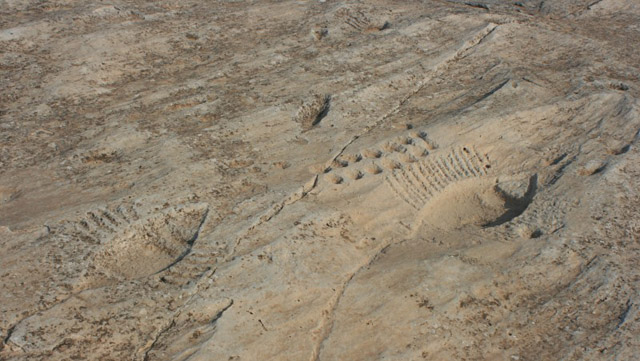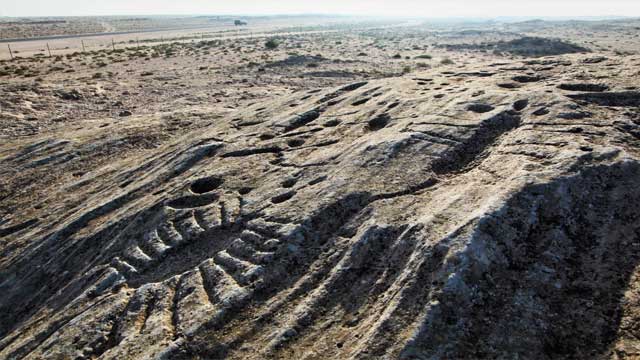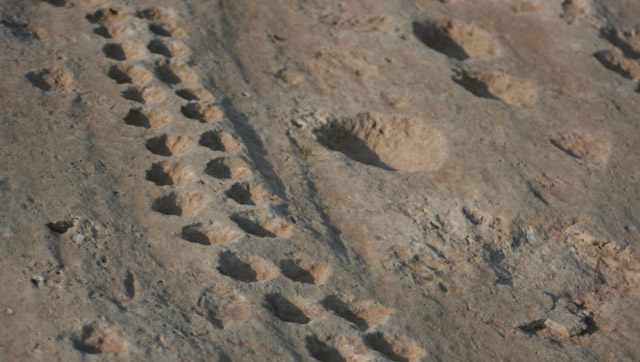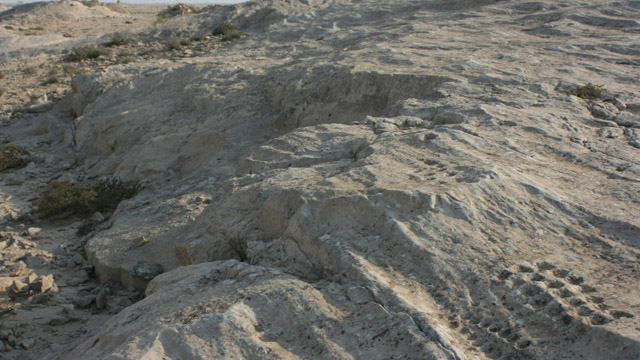Al Jassasiya
The Al Jassasiya site is one of the most mysterious and attractive sites in Qatar.
Northeast of Doha, it is one of the few places where you can find petroglyphs, which are collections of rare and amazing signs carved in stone. Carvings can be found at other sites, however those found at Al-Jassasiya are considered the most extraordinary in terms of both their quality and their state of preservation.
An astounding 900 glyphs can be found at Al-Jassasiya. Shapes vary from geometric patterns to representations of animals and boats found on two parallel 'jebels,' which are outcrops of fossil and sand dunes.
Seventy-one daisy shaped patterns made up of nine small holes around a larger central hole also exist. Some believe they were used for a game called 'ailah,' known as 'umm al-judairah' in Kuwait and Bahrain.
The most common outlines are double rows of seven to nine shapes that look like cups (333 in total, 193 with seven cups). These cups are believed to have been used for another game called 'haloosa' or 'huwaila'. It is known in West Africa as 'mandala'.
Similar carved rows dating back to the 15thcentury BC can be found in the temple of Karnak in Luxor, Egypt, and others dating back to the 5th century BC can be found in the same place.
The total number of double rows and daisies, combined with the wide range of variations in the size of cups, casts doubt upon their use as game tables and suggests they are more likely to be symbolic representations carved by an old local culture still waiting to be researched.
The most unusual carvings are those of thick-finned fish fossils, boats with numerous oars, scorpions walking on the rocks, donkeys and those depicting the outlines of turtles. In total, these carvings number more than 100.
Mystery surrounds several deep holes that are connected by thin channels through which water can run. It is believed that these designs celebrated the rain, which is, of course, rare and precious in Qatar. There are also a few carvings that appear to be groups of stars connected by lines, representing constellations.
A Danish archaeological mission studied the site in 1961 and at the beginning of the 1970s.
Qatari authorities are currently consulting other experts for further interpretations. Many theories exist, but there is very little compelling evidence to determine the dates of origin of these fascinating carvings.
Ruins of old settlements and dwellings containing local and foreign pottery dating back to the 15th century have been uncovered around the outcrops at Al-Jassasiya.
Yet the carvings are believed by some to be much older. Others, however, point to the softness of the rocks on the outcrops, which can be eroded quite easily, suggesting that the carvings might be more recent.
Petroglyphs can also be found at Al-Jassasiya, Al-Wakra, Simaisma, Fuwairit, AlGhariah, Freha, and Al-Jemail.
Planning a visit
Before visiting the site, we suggest visiting the Web sites of other important rock carvings so that you can develop a better understanding of this rare kind of heritage.
As a reference, we suggest the sites of Val Camonica
Page : (Italy) [http://whc.unesco.org/en/list/94],
Page : Alta (Norway) http://whc.unesco.org/en/list/352]
Page : Tamgaly (Kazakhstan) [http://whc.unesco.org/en/list/1145].
Consider bringing some snacks and refreshments along, as the nearest restaurant is in Madinat AlShamal.
Please remember not to litter the area and to take any garbage back with you.
The site is always open and there is no admission fee.
UTM coordinates N 25° 57' 07.7" E 51° 24' 22.8"
Address :
Al-Jassasiya is in the northeast of Qatar, 75 km from Doha. Take the North Road toward Al-Khor for approximately 85 km and turn right at the Al-Huwaila sign (you will see a white mosque at the junction). Then, take the first paved road on your left and go straight; after three km you should see a large fenced area on the left side of the road accessible through several gates. This is the site of the rock carvings. The first outcrop is parallel to the road. The biggest carvings are located beside an old sign you can see from the road. The second group of carvings is further north on the other outcrop, and is accessible through a gate further down the road.














